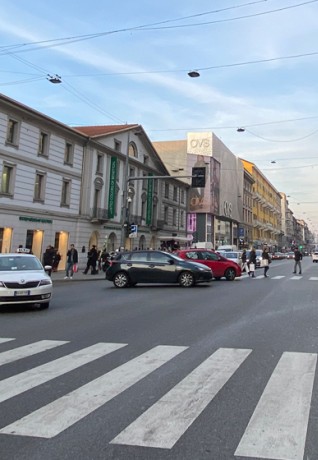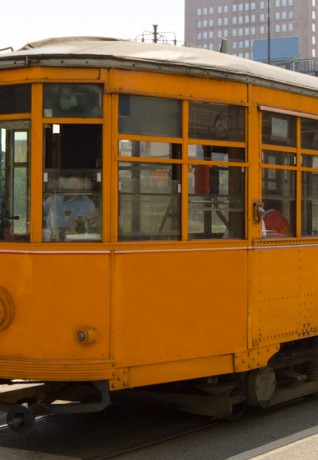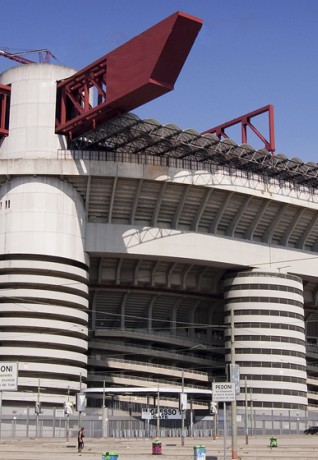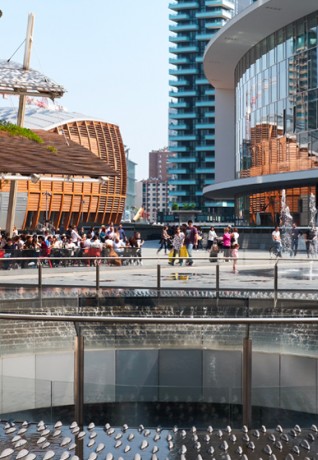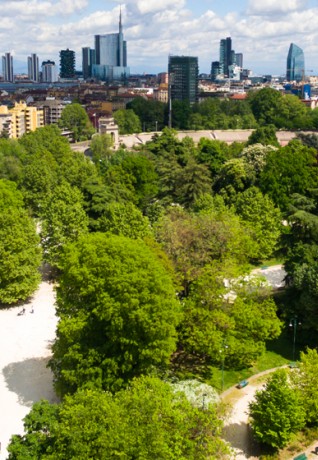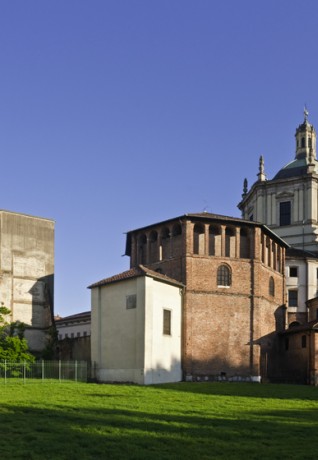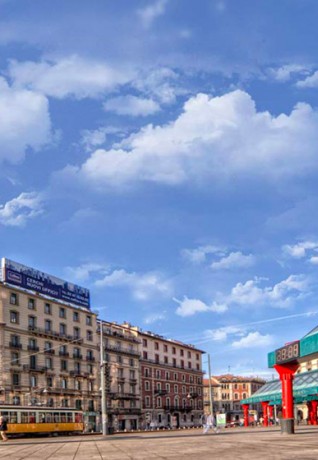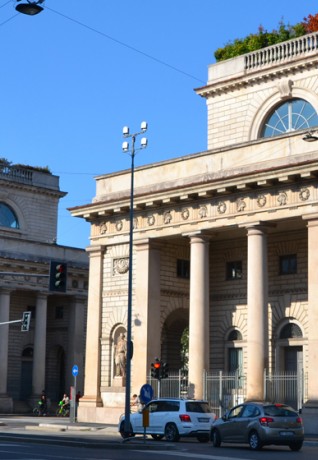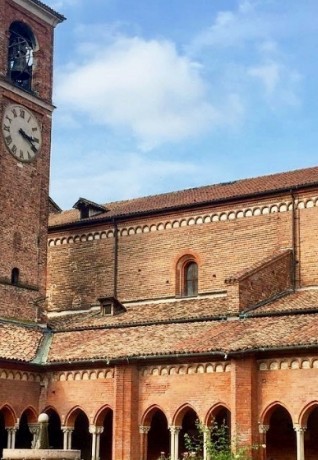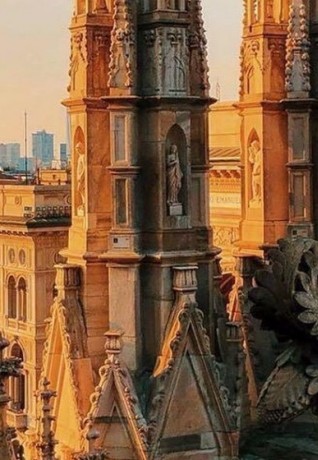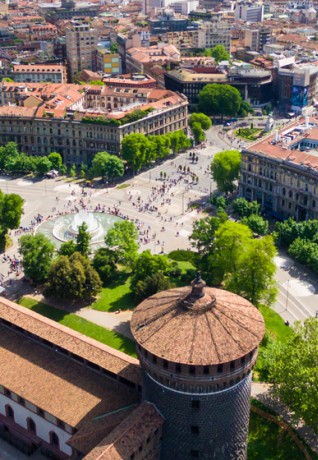Accessible itinerary: high fashion and theatres
From Stazione Centrale to Teatro alla Scala
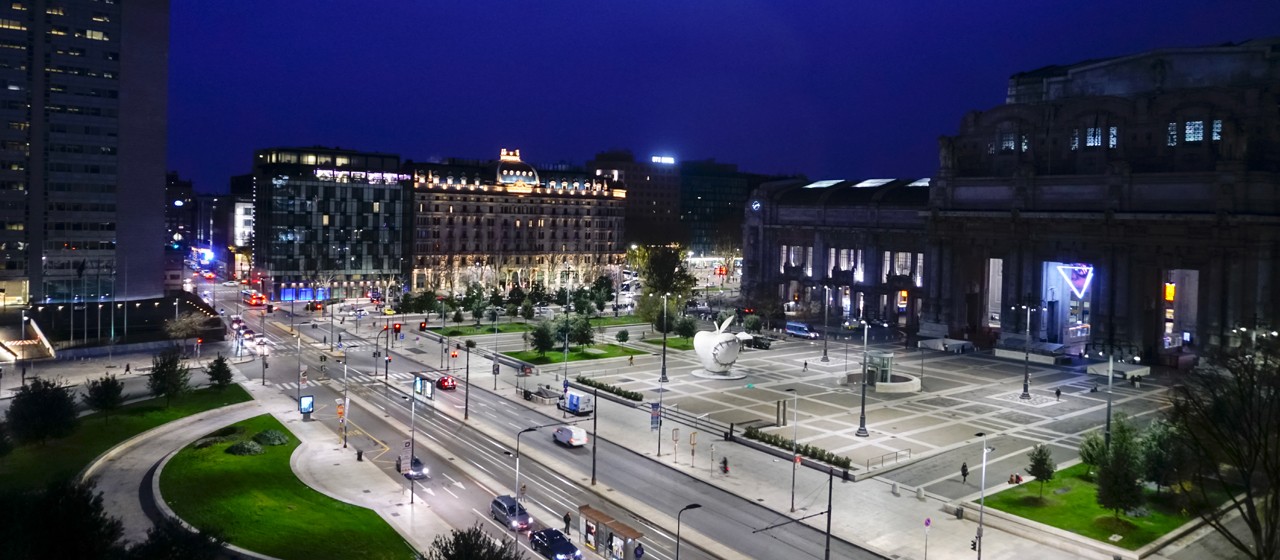
The starting point of the itinerary is piazza Duca d’Aosta, in front of the Stazione Centrale di Milano.
How to get there
Piazza Duca d’Aosta can be reached by public transport: tram: 5 and 9; bus: 60, 81, 87, 90, 92; underground M2 and M3 (Centrale stop).
For more information for passengers with disabilities, please visit the ATM web page.
In Piazza Luigi di Savoia, near the station entrance, there is a parking space for disabled pass holders; in the square, there are several parking spaces on blue stripes. The stretch from the parking lot to the entrance of the railway station does not have architectural barriers and has a tactile route for people with visual impairment.
In Piazza IV Novembre, near the entrance to the station, there are two parking spaces for disabled pass holders.
The starting point of this itinerary is Piazza Duca d'Aosta, where the Stazione Centrale di Milano is located. The railway station, an imposing and monumental building, was inaugurated in 1931. The building does not have a defined architectural style, but is a mixture of different styles, in particular, Liberty and Art Decò added to the typical aspects of the fascist architecture.
Inside the Stazione Centrale it is possible to visit the Shoah Memorial. To reach its entrance, exit the side entrance of the Stazione Centrale which overlooks Piazza Luigi di Savoia. Once in the square, turn left and cross the Mortirolo underpass, continue along via Ferrante Aporti (asphalt sidewalk) and reach Piazza Edmond J. Safra (about 300 meters away).
Inaugurated in 2013, the Memorial is located in an area of the station located under the tracks. Between 1943 and 1945, hundreds of deportees were loaded onto freight wagons directed to the extermination camps (Auschwitz-Birkenau, Bergen Belsen) or to the collection camps of Fossoli and Bolzano.
On January 30, 1944, a train departed from platform 21 with over 600 Jewish Milanese citizens heading to Auschwitz. Only twenty of them survived.
In Piazza Duca d'Aosta, you can admire the Pirelli skyscraper (called the Pirellone) designed by Gio Ponti, Giuseppe Valtolina and Pier Luigi Nervi. The building was originally constructed to house the Pirelli's offices and it stands in the area where the group's factories were previously located and then destroyed by the Allied bombing during the Second World War.
Made of glass and steel, 127 meters in height, the Pirellone was for many years the tallest skyscraper in Milano. At certain times of the year, the 31st floor, called the "Belvedere", is open to the public with free admission and without reservation.
From Piazza Duca d'Aosta take the lift (in the middle of the square, right in front of the main entrance of the station) to reach the mezzanine of the underground. From here, take the M3 line toward San Donato and get off at the Montenapoleone stop, the heart of the Milanese fashion district, where jewellers, boutiques and fashion shops, design and furniture showrooms are concentrated.
Once out of the lift, turn left (paved pedestrian area, sometimes uneven) and reach via Alessandro Manzoni. One of the most famous streets of the "quadrilatero" is via Montenapoleone and you will find it just in front of you. If you want to take a walk along via Montenapoleone, cross via Manzoni at the traffic light (pedestrian crossing in cobblestones with tram rails).
After about 200 meters, you reach the Poldi Pezzoli Museum that was created in the mid-nineteenth century as a private collection of the Milanese nobleman Gian Giacomo Poldi Pezzoli, who decided to make an art foundation with all his works, to be used as a public museum for ordinary people.
On the first floor of the museum, you can admire works by Piero della Francesca, Perugino, Sandro Botticelli, Michelangelo Buonarroti, Francesco Hayez and Canaletto. The ground floor is reserved for temporary exhibitions.
For more information on the museum, please visit the "Case Museo" of Milano website: https://casemuseo.it/il-circuito/
After visiting the museum, walk along via Manzoni and after a few meters, you find via Gerolamo Morone on your left. The sidewalk is only 90 cm wide and this stretch of road might be difficult for people in wheelchairs. In this part of the street you sometimes have to use the roadway (uneven paving), untill you reach the Museo Manzoniano), located in the house where Alessandro Manzoni lived from 1814: the interiors preserve the original furnishings, in particular the study room, the bedroom and the library of the author of I promessi sposi (The Betrothed).
Continuing along via Manzoni, after about 150 meters, you arrive in Piazza della Scala where the Teatro alla Scala stands, whose name comes from the Church of Santa Maria alla Scala, which was demolished at the end of the XVIII century to make room for the New Royal Ducal Teatro alla Scala, inaugurated on August 3, 1778. Giuseppe Verdi, Arturo Toscanini, Claudio Abbado, Maria Callas performed in the theatre.
The theatre was severely damaged by bombing during the Second World War; its reopening became the symbol of the rebirth of the city.
The "Museo Teatrale alla Scala" is also worth a visit.
Other prestigious buildings overlook the square: Palazzo Marino, a noble building built in the second half of the XVI century and from 1861 the headquarter of the Town Hall, and the Palazzo della Banca Commerciale Italiana, hosting the Gallerie d'Italia, an exhibition space created by Intesa Sanpaolo to make its artistic and architectural heritage available to the public, together with the collections from the Cariplo Foundation, another partner of the project.
There you can admire works of art created between the nineteenth and twentieth centuries by artists such as Antonio Canova and Umberto Boccioni.
The benches surrounding the statue of Leonardo da Vinci, located in the centre of the square, are the perfect place to rest at the end of the itinerary.
A good alternative is the small Piazza San Fedele, a quiet place behind Palazzo Marino, overlooked by the Parish of Santa Maria della Scala in San Fedele and the homonymous Cultural Foundation.
In the middle of the square there is a statue of Manzoni.
Piazza della Scala can be reached by: M1 underground, (Duomo and Cordusio stops) and M3 underground (Montenapoleone stops), by tram: 1, 2, 12, 14.
For more information for passengers with disabilities, please visit the ATM web page.

 Log in
Log in


